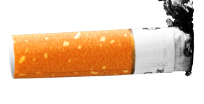expert witnesses- legal aspects
1/13
There's no tags or description
Looks like no tags are added yet.
Name | Mastery | Learn | Test | Matching | Spaced |
|---|
No study sessions yet.
14 Terms
generally speaking:
· Evidence will only be permitted to be presented in court if it is (a) admissible and (b) relevant.
·The trial is an attempt to ascertain facts in determining whether or not the crown has discharged its burden and proved its case beyond a reasonable doubt.
·Evidence of a witness’ opinion is not generally admissible.
·Contrast: (a) “I saw X stab Y” with (b) “I believe/suspect/know in my gut that X stabbed Y.”
·Statement (a) is relevant and admissible.
Statement (b) is mere opinion evidence and is not.
explain expert evidence
·Only admissible if the court needs the assistance of an expert.
·Expert evidence must deal with something where, without instruction or advice from an expert, the trier of fact would be unable to reach a sound conclusion as to the subject matter. (e.g. Gage v HM Advocate 2012 SCCR 161; Snowden and Jennings v. HM Advocate 2014).
· Expert evidence regarding the credibility or reliability of a witness's evidence, or on aspects of human nature within the limits of normality, is in general inadmissible. It is admissible only if it furnished scientific information on matters out with the jury's knowledge.
·The test is one of necessity, not assistance or usefulness of the expert evidence.
define the Test of “necessity”
• Lord Justice Lawton in R v. Turner [1975] QB 834, at 841:
“An expert's opinion is admissible to furnish the court with scientific information which is likely to be outside the experience and knowledge of a judge or jury. If on the proven facts a judge or jury can form their own conclusions without help, then the opinion of an expert is unnecessary. In such a case if it is given dressed up in scientific jargon it may make judgment more difficult. The fact that an expert witness has impressive qualifications does not by that fact alone make his opinion on matters of human nature and behaviour within the limits of normality any more helpful than that of the jurors themselves; but there is a danger that they may think it does.”
are you an expert?
•Dickson on Evidence 3rd edn:
•“A foundation for such an examination must always be laid by ascertaining whether the witness is a person of skill or an expert, under is included those who have a theoretical acquaintance with the subject, as well as men who speak from practical knowledge. A peculiar fitness, however, for the office in one of those respects is essential.” [para 397]
is corroboration needed?
• We know that the essential facts of a criminal case must be corroborated in Scotland – the essential facts being that (a) a crime was committed and (b) that it was the accused who committed it (Morton v HM Advocate).
• If the essential fact in dispute is a matter of technical science, it cannot be established on the uncorroborated testimony of a single expert witness.
•This is particularly important, in criminal practice, from the point of view of identifying the accused as responsible for the crime, on the basis of circumstantial evidence and forensic data left at the crime scene or left on the suspect’s clothing.

explain Hamilton v HM Advocate
•1934 JC 1
•Robert Hamilton charged with breaking in to a shop in Shettleston and stealing 3,000 cigarettes and “by means of explosives” force open a locked safe, stealing £261.
•Open bottle of raspberry wine found on the counter of the shop after the break-in – fingerprints taken and compared with fingerprints of the accused.
• Two detectives from the finger print bureau of Scotland Yard testified: “in respect of sixteen characteristics which they specified, the print of the middle finger on the bottle was identical with that of the accused, and that these points of identity were sufficient to prove the identity of the accused's finger-prints with those on the bottle.”
• The Appeal Court held this was sufficient evidence, in law, to convict the accused of theft.

explain Colin Reid v HM Advocate
• [2016] HCJAC 41
•Break-in in house in Drumnadrochit, resulting in the house being “ransacked” and a watch and jewellery stolen.
•But who did it? Cigarette stub found inside house near the thief’s point of exit or entry. The house-owner did not smoke.
• The accused’s explanation?
•The expert’s report: “The ... DNA sample from the accused ... was compared with ... Label 1 – a cigarette butt. Cellular material on the cigarette butt was analysed and the partial male profile obtained matched the corresponding DNA types in the DNA profile of the [appellant]. The estimated probability of finding such matching DNA profiles if another male unrelated to [the appellant] is the contributor of this DNA is 1 in more than 1 billion.”

explain Dunbar v HM Advocate
•[2015] HCJAC 22
•Charge of being concerned with the supply of diamorphine under s.4(3)(b) the Misuse of Drugs Act 1971
•“The prosecution was brought following the receipt in HM Prison Saughton of a postal box which, having aroused some suspicion on the part of the prison authorities, was examined by police officers. The officers found the box to contain a plastic carrier bag within which were five books. Within the spine of each of those books was a sealed brown paper envelope. Four of those envelopes contained powder which on subsequent analysis was found to include diamorphine. The fifth envelope also contained a quantity of powder which, in the case of that envelope, contained cocaine.”
• Evidence against his co-accused was considerably stronger. But evidence against Dunbar?
•Only the findings of the expert report:
•“DNA was extracted from any cellular material present on the above item and the incomplete DNA profile obtained, which was male in origin, matched the respective parts of the DNA profile of the mouth swab taken from (the appellant). The probability of finding such matching DNA profiles if a male other than (the appellant) is the source of this DNA is approximately one in four million. The above statistic has been derived from a database of Caucasians and assumes that any other possible source of this DNA is not related to (the appellant).”
•When questioned, the scientists was unable to say whether the cellular material detected was contained in saliva or any other bodily fluid. She also accepted presence of the material consistent with direct or secondary transfer.
• Appeal Court held: insufficient evidence to justify conviction.
what are the some exceptions? in corroboration.
•In civil cases, corroboration is not needed.
•Similarly, fatal accident inquiries.
•There are also special rules on routine evidence in criminal proceedings
•S.280, Criminal Procedure (Scotland) Act 1995 “For the purposes of any criminal proceedings, a report purporting to be signed by two authorised forensic scientists shall … be sufficient evidence of any fact or conclusion as to fact contained in the report and of the authority of the signatories.”
•S.281, At the time of lodging an autopsy or forensic science report as a production the prosecutor may intimate to the accused that it is intended that only one of the pathologists or forensic scientists purporting to have signed the report shall be called to give evidence … the evidence of one of those pathologists or forensic scientists shall be sufficient evidence of any fact or conclusion as to fact contained in the report and of the qualifications of the signatories,” unless the accused objects.
what are the expert’s duties to the court?
•In adversarial proceedings, the expert is engaged by one party to the case (E.g. forensic scientists are employed by law enforcement agencies).
•They owe an overriding duty to the court to provide the independent product of the expert, uninfluenced as to form and content by the party engaging them.
•They should provide independent assistance to the court by way of an objective, unbiased opinion in relation to matters within their expertise. An expert witness should never assume the role of an advocate, or a “hired gun”.
• The expert is not entitled to keep any reservations about their evidence or conclusions to themselves.
•An expert should make it clear when a particular issue or question falls outwith their expertise.
•Expert should be transparent: up front about their methodology, disclose critical facts, assumptions made, and viable alternative conclusions and explanations.
•Experts should not attempt to usurp the role of the jury or judge in a summary case. They should not testify that there is no “reasonable” doubt.
• Evaluative opinions may be provided (for example, the likelihood of a fingerprint or DNA match.)
•If the conclusions are based on subjective judgement rather than statistical analysis, this should be disclosed.
define: Trier of fact not bound to accept expert testimony.
•Lord President Cooper, Davie v. Magistrates of Edinburgh 1953 SC 34.
•“Expert witnesses, however skilled or eminent, can give no more than evidence. They cannot usurp the functions of the jury … Their duty is to furnish the Judge or jury with the necessary scientific criteria for testing the accuracy of their conclusions, so as to enable the Judge or jury to form their own independent judgment by the application of these criteria to the facts proved in evidence. The scientific opinion evidence, if intelligible, convincing and tested, becomes a factor (and often an important factor) for consideration along with the whole other evidence in the case, but the decision is for the Judge or jury.”
explain, controversies: “Cot death” syndrome
•Professor Sir Roy Meadow was a pediatrician of lengthy experience. He was called to give evidence in the trial of Angela Cannings in 2002, who was convicted of killing two of her children. He also testified in a number of other cases with a similar fact pattern, including Sally Clark in 1999, Donna Anthony in 1998.
•In these cases, Meadow testified – as an expert witness – “the chance of two children dying naturally in these circumstances is very, very long odds indeed, one in 73 million.”
•Meadow reached this statistical conclusion by squaring the individual probability of 8,543. At its subsequent disciplinary hearing into Meadow’s professionalism, the GMC heard that this statement was a gross exaggeration.
•Research in the field estimated the chance of multiple sudden infant deaths in one family were in the order of one in 77.
•Meadow was subsequently struck off, then reinstated, by the General Medical Council.
• “White coat syndrome”? “Prosecutor’s fallacy”?
what should the export report cover?
•(a) Basic information such as names and dates;
•(b) Purpose in presenting the report, and description of matter investigated;
•(c) The history of the matter;
•(d) Methodology used in investigation;
•(e) Details of any documents used;
•(f) Facts ascertained;
•(g) Inferences drawn from the facts, with reasoning;
•(h) Summary of the expert's qualifications and experience.
explain how it should be written.
Plain English should be used and any technical terms explained.
Copies of any document or papers referred to in the report should be provided; any items referred to may be subject to recovery by commission in any court proceedings and experts should ascertain from instructing solicitors whether or not in view of that it is appropriate to refer to documents provided by the solicitor; it is unnecessary to copy widely and easily available documents.
The expert's final report should be dated and signed by the individual(s) who will if required give evidence in support of it.